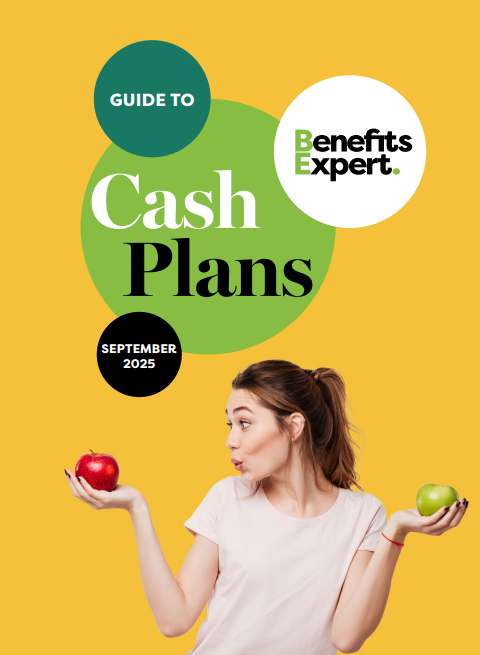Trump’s tariff u-turn may have calmed the markets, for now, but the chaos has exposed deep economic risks. As the UK eyes opportunity, the world braces for more turbulence, says Steve Herbert, brand ambassador for Occupational Health Assessment Ltd, a Benefits Unboxed podcast host, and veteran HR and employee benefits commentator.
Yesterday’s big economic announcement here in the UK was set to be the welcome – and massive – announcement of the Universal Studios theme park to be built and opened near Bedford. Reportedly this project could generate some £50bn for the UK economy and around 28,000 jobs.
Yet even this huge announcement was dwarfed by the increasingly random actions of one Donald J. Trump on the other side of the pond.
Going up
Trump had boasted on Tuesday evening how his tariffs announced only last week were working for the United States of America. He even went as far as to claim that other nations were “queuing up to kiss my arse” in another of his less than presidential moments.
His rationale for saying this was the list of nations eager to commence trade talks with the USA. This, it should be pointed out, was already the polar opposite of his originally stated intention of tariffs helping to reindustrialise the US economy.
Plunging down
Yet by Wednesday reality – and the financial markets – had finally caught up with him.
Government borrowing costs were an inescapable problem in 2022 for Liz Truss here in the UK, and so too they proved to be for Trump over there in 2025.
The sudden and startling rise in US government borrowing rates triggered a public reaction and a chorus of criticism was heard from those many voices that have remained quiet through the early days of the second Trump term. The Democrats, Wall Street traders, some (of the braver) senior Republicans, the head of the Federal Reserve, and even Trump’s rather unlikely ally Elon Musk all raised concerns. And it soon became clear that the threat of a full-blown financial melt-down was possible if something didn’t change.
Full circle
And then Trump flinched.
The reality of so much growing unease – and the continued downward momentum of share prices – forced Trump into a clear reversal of policy. Yesterday evening there was an unexpected Trump post on social media announcing a pause to his tariffs for most nations for a 90-day period.
Trump’s announcement was, characteristically, hidden behind a wall of vitriol (this time for China) and meaningless fluff. But the reversal and climbdown was undeniable to all but the most entrenched MAGA supporter.
Accordingly, the previously terrified financial markets have replied with huge – and very welcome – gains across the globe, while US Treasury rates also stabilised and fell a little.
Still a scary ride!
Yet even this policy reversal may not prove as positive as it seems at first glance. In the cold light of day Trump has simply returned to his pre-election position of a flat 10 percent on all imports into the USA, and we in the UK remain exposed to this new trade barrier.
Before Trump took office the World Bank estimated that a flat rate 10 percent US import tariff would decrease global economic growth by 0.2 percent, and that figure could increase significantly if retaliatory tariffs were introduced. It should be noted that tariffs between the USA and China (the world’s two biggest economies) now stand at more than 100 percent. It follows that the impact on global growth will still be very significant indeed.
That said, at least this flat rate 10 percent tariff for most other nations is somewhat easier to understand and navigate as we enter the second circuit of this rollercoaster ride over the next 90 days.
And this 90-day timeline is likely to extend significantly once the world’s media focus has moved on to other issues and Trump can reposition himself a little. Indeed, it is quite possible that the deadline might quietly fade away and not be revisited at all.
Yet Trump will still need some big wins to restore his fiscal reputation and authority with his base. It follows that there might now be an opportunity for the UK – as one of the world’s largest economies – to strike a deal on more favourable terms than would have been offered only a week ago.
Repeating the experience?
But before anyone climbs aboard for another go on the “Trump Tariff Train” ride it is worth remembering that he has proved himself to be a somewhat unreliable trading partner.
The last few weeks have provided ample evidence that Trump is perhaps even more volatile and unpredictable to friend and foe alike than he was in his first term. Is this really the trading partner that the UK wants to rely on for that much needed growth given that Trump’s position as president is rock-solid for at least the next three years and nine months?
Meanwhile much of the world will probably continue to formulate quietly made plans to potentially work around – rather than with – the USA in future. This could have far-reaching implications for the US economy and wider global trade. As a result, there may well be many more fast climbs and terrifying drops before this particularly scary ride ends.













